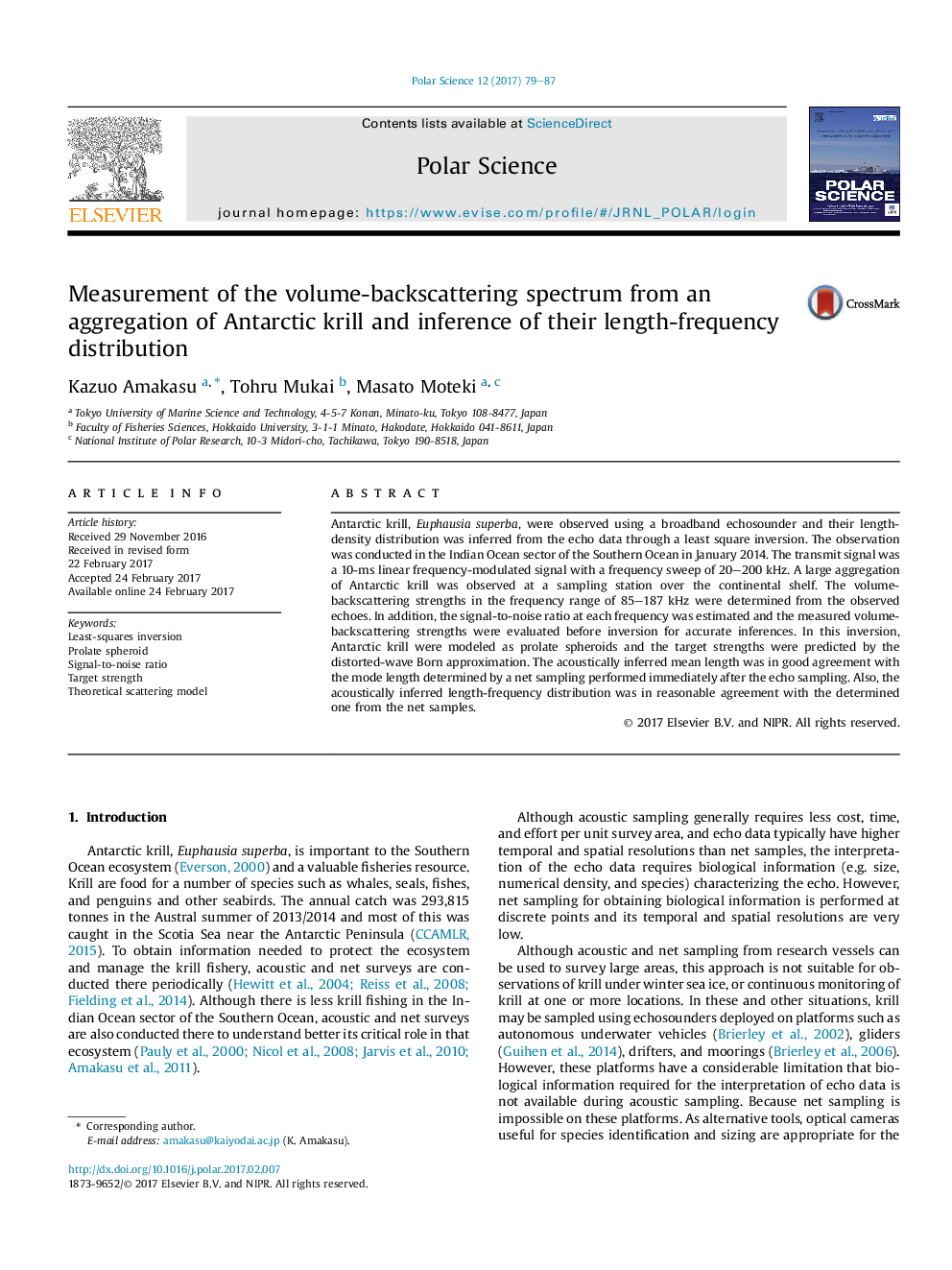| Article ID | Journal | Published Year | Pages | File Type |
|---|---|---|---|---|
| 5780569 | Polar Science | 2017 | 9 Pages |
Antarctic krill, Euphausia superba, were observed using a broadband echosounder and their length-density distribution was inferred from the echo data through a least square inversion. The observation was conducted in the Indian Ocean sector of the Southern Ocean in January 2014. The transmit signal was a 10-ms linear frequency-modulated signal with a frequency sweep of 20-200Â kHz. A large aggregation of Antarctic krill was observed at a sampling station over the continental shelf. The volume-backscattering strengths in the frequency range of 85-187Â kHz were determined from the observed echoes. In addition, the signal-to-noise ratio at each frequency was estimated and the measured volume-backscattering strengths were evaluated before inversion for accurate inferences. In this inversion, Antarctic krill were modeled as prolate spheroids and the target strengths were predicted by the distorted-wave Born approximation. The acoustically inferred mean length was in good agreement with the mode length determined by a net sampling performed immediately after the echo sampling. Also, the acoustically inferred length-frequency distribution was in reasonable agreement with the determined one from the net samples.
